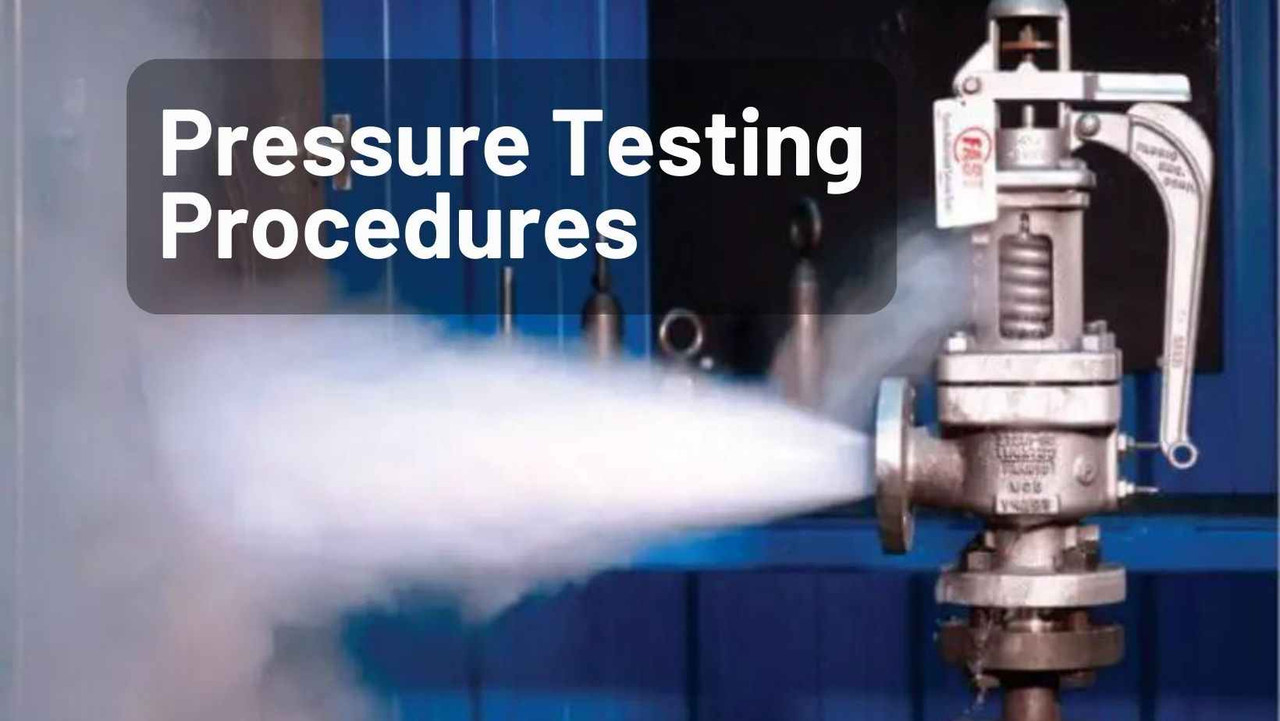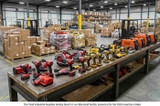Pressure Testing Procedures: Best Practices and Safety Guidelines
Pressure Testing Procedures
Introduction:
Pressure testing is a crucial procedure used across various industries to ensure the safety and functionality of equipment, pipelines, and systems. By subjecting a system to a specific pressure, it's possible to determine if there are any leaks or weaknesses present. However, pressure testing can pose risks if not conducted correctly, making it essential to understand and follow best practices.
Understanding Pressure Testing:
Historically, pressure testing has been an integral part of industries ranging from plumbing to aerospace. As technologies and materials have evolved, so have the methods to ensure they can withstand specific pressures. There are several types of pressure tests, with the most common being:
- Hydrostatic Testing: Uses water as the test medium and is often employed for testing pipelines and storage tanks.
- Pneumatic Testing: Uses air or another gas as the test medium and is typically used for systems where water may cause damage or for systems that operate under gaseous conditions.
Preparing for a Pressure Test:
Before initiating a pressure test, it's essential to:
- Select the Appropriate Test Medium: Depending on the system and its operational conditions, you might opt for air, water, or oil as your testing medium.
- Clean the Equipment: Any contaminants can alter the test results. Ensure the system is free from dust, debris, or any residual liquids if switching test mediums.
- Check Seals, Joints, and Connections: A thorough inspection ensures all components are intact and properly sealed. This step helps in preventing any unexpected leaks or bursts during the test.
Best Practices for Conducting Pressure Tests:
Conducting the test requires meticulous attention to detail. Here's a step-by-step guide:
- Initial Inspection: Before applying any pressure, visually inspect the system for any obvious issues or damages.
- Filling the System: Slowly introduce the test medium, ensuring no air pockets (especially important for hydrostatic tests) and the system is filled to the desired level.
- Applying Pressure: Gradually increase the pressure to the predetermined test level. Doing this slowly is essential to prevent any sudden stress on the system.
- Monitoring and Recording Results: Once the desired pressure is reached, maintain it for the test duration. Monitor the system for any pressure drops, which could indicate a leak. Record the results for future reference and analysis.
- Follow Manufacturer's Guidelines: Always refer to the equipment manufacturer's guidelines. They will provide specific pressures, test durations, and other essential details tailored to the particular equipment you're testing.
Pressure testing is a vital procedure that, when done correctly, ensures the safety and efficiency of various systems. By understanding its history, preparing adequately, and following best practices, you can ensure accurate results and the longevity of your equipment.
Safety Guidelines:
Safety is paramount when conducting pressure tests. The immense forces exerted during these tests can pose risks if not managed correctly. Here are some essential safety guidelines to follow:
- Personal Protective Equipment (PPE): Always wear appropriate PPE, including safety goggles, gloves, and protective footwear. Additional PPE, like face shields or protective suits, might be necessary depending on the test medium and the system.
- Clear the Test Area: Ensure that only essential personnel are present in the test area. This minimizes the risk to others and ensures that those in the vicinity know the procedures and potential hazards.
- Venting and Depressurizing: After the test, it's crucial to vent and depressurize the system safely. This should be done gradually to prevent any sudden release of pressure, which could be hazardous.
- Handling and Disposal of Test Mediums: When dealing with potentially hazardous test mediums, ensure they are handled carefully and disposed of following environmental and safety regulations.
Interpreting Test Results:
Once the test is complete, understanding the results is crucial for making informed decisions:
- Acceptable Pressure Ranges: Know the acceptable pressure ranges for the specific equipment or system being tested. Any deviations from this range can indicate potential issues.
- Identifying Potential Issues: A pressure drop might indicate a leak, while unusual fluctuations could suggest issues with the system's integrity or the test setup.
- Informed Decisions: Use the test results to determine if the equipment is safe for use, requires repairs, or needs further investigation.
Post-Test Procedures:
After the test, it's essential to return the system to its standard operational state and document the findings:
- Venting and Draining: Safely vent any residual pressure and drain the test medium from the system. Ensure this is done environmentally friendly, especially if the test medium is a potential pollutant.
- Inspection: Conduct a thorough inspection of the system to check for any damages, deformities, or issues that might have arisen during the test.
- Documentation: Always document the test results, observations, and post-test actions. This serves as a record and can be invaluable for future reference, maintenance schedules, and ensuring compliance with industry regulations.
Pressure testing is a meticulous process requiring technical knowledge and safety awareness. By following best practices and safety guidelines and understanding the results, one can ensure the reliability and safety of equipment and systems. For those looking to invest in quality testing equipment and tools, Tend Industrial Supplies offers a range of products tailored to meet industry standards.
Common Mistakes and How to Avoid Them:
Pressure testing, while crucial, is often riddled with common mistakes that can compromise the integrity of the test and the safety of the personnel. Here are some frequent errors and how to steer clear of them:
- Overpressurizing the System: Always adhere to the recommended pressure limits. Overpressurizing can lead to equipment damage and potential safety hazards.
- Not Allowing Enough Time for Stabilization: After applying pressure, it's essential to allow the system to stabilize. Rushing this step can lead to inaccurate results.
- Ignoring Minor Leaks or Discrepancies: Even small leaks can escalate over time. Always address any discrepancies, no matter how minor they seem.
The Future of Pressure Testing:
As with many industries, pressure testing is evolving with the advent of new technologies:
- Technological Advancements: Modern pressure testing equipment offers higher precision and reliability, ensuring more accurate results.
- Automation and Digital Monitoring: The future will likely see more automated pressure tests with real-time digital monitoring, reducing human error and increasing efficiency.
Conclusion:
Pressure testing is a critical procedure that ensures the safety and functionality of various systems and equipment. By understanding its intricacies, adhering to best practices, and avoiding common pitfalls, professionals can guarantee the reliability of their tests. Staying updated with the latest tools and techniques is paramount as technology advances.
Call to Action:
For those in the industry, investing in high-quality testing equipment is essential. Tend Industrial Supplies LLC offers a curated selection of top-tier pressure testing tools and equipment, ensuring that professionals can access the best resources available. To explore their range or seek expert advice, contact Tend Industrial Supplies LLC at sales@tendsupplies.com. Prioritize safety, accuracy, and quality with Tend Industrial Supplies LLC.









